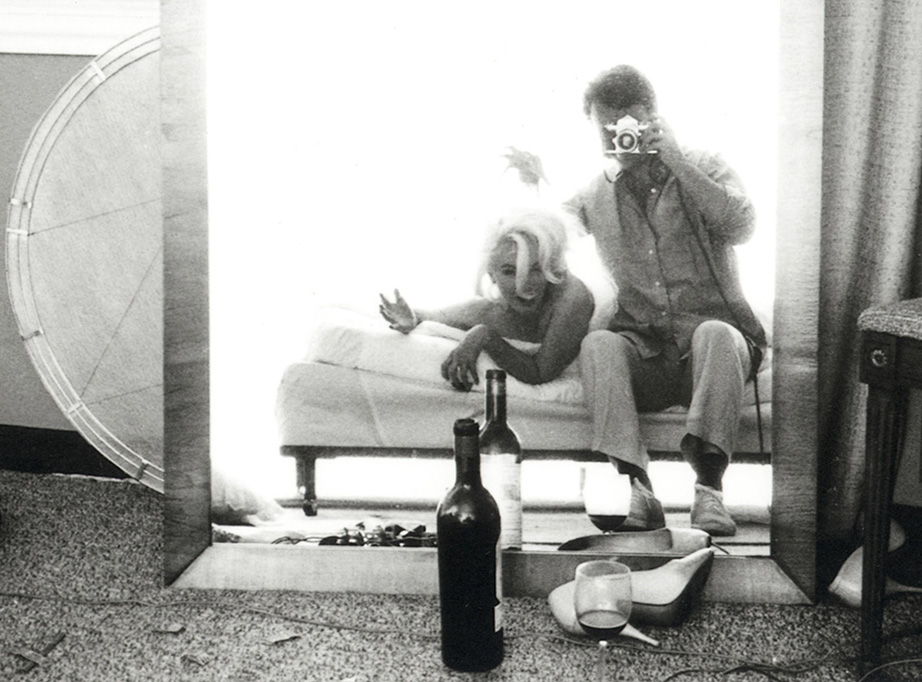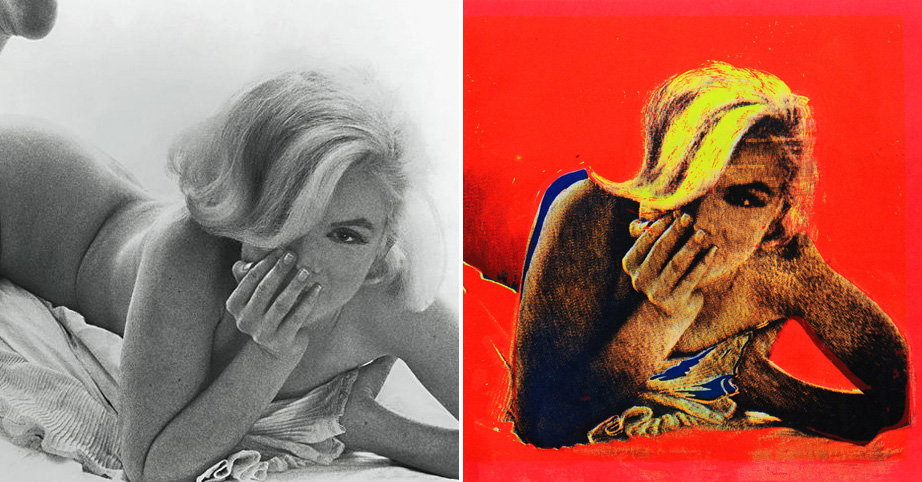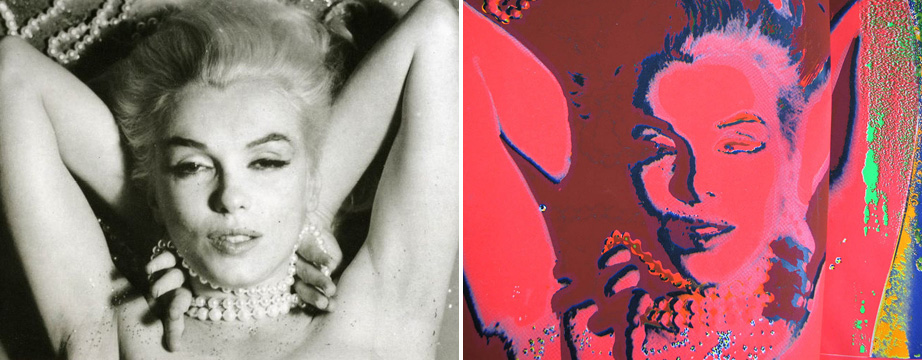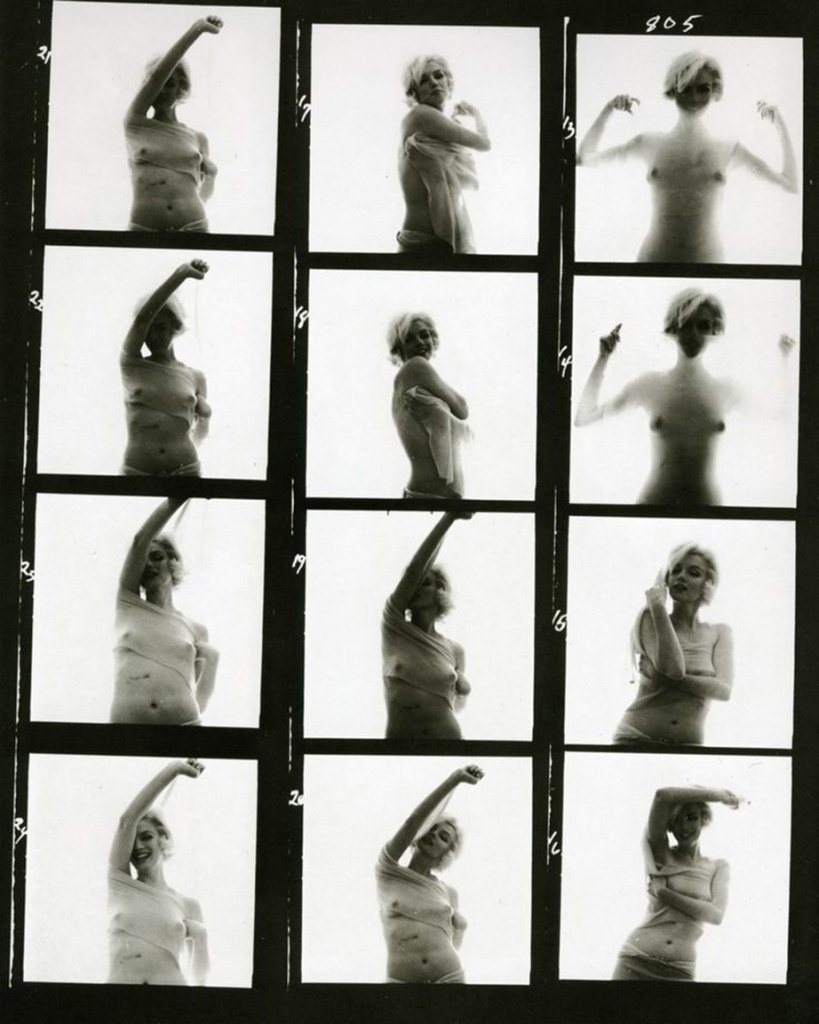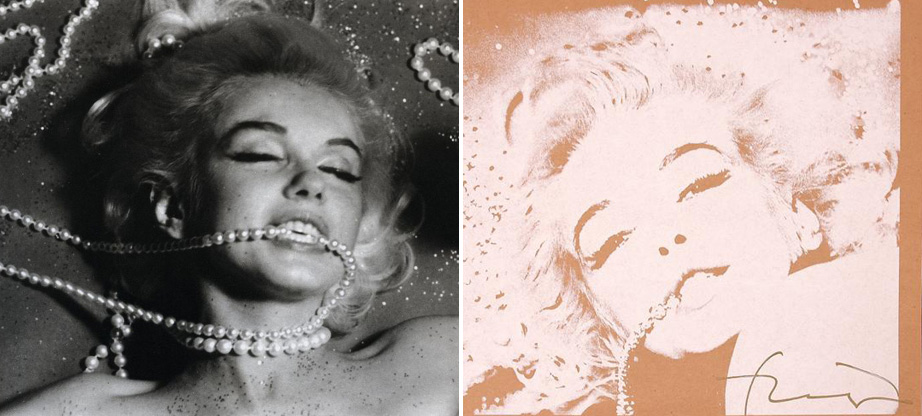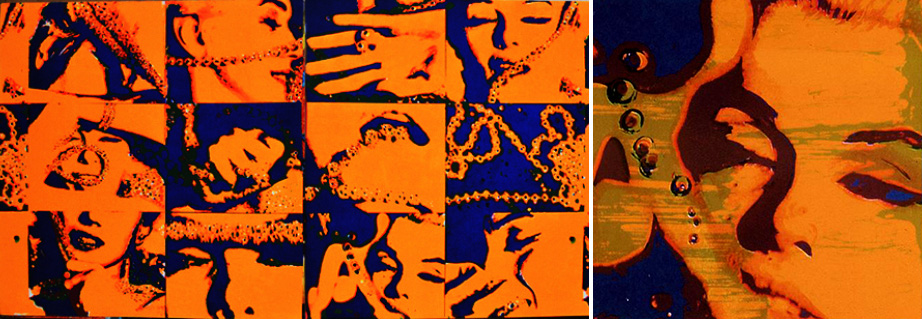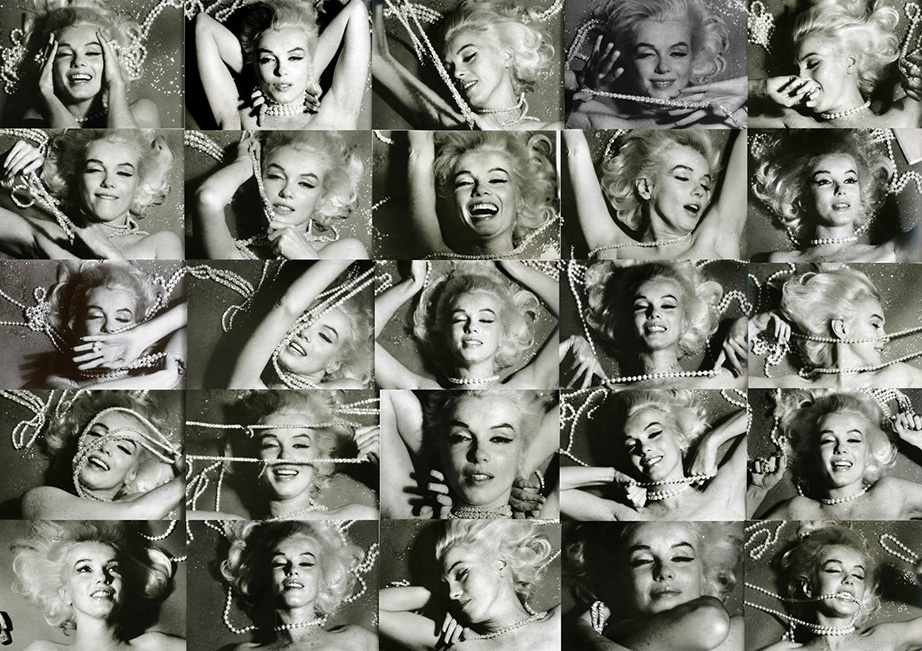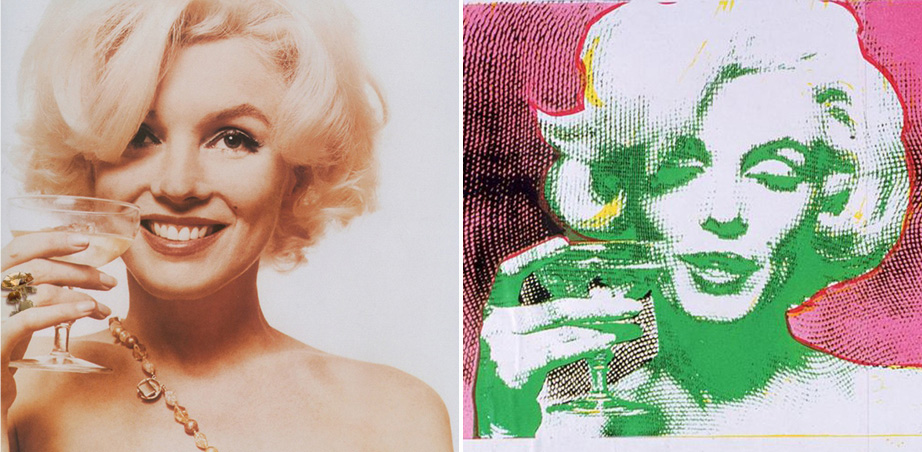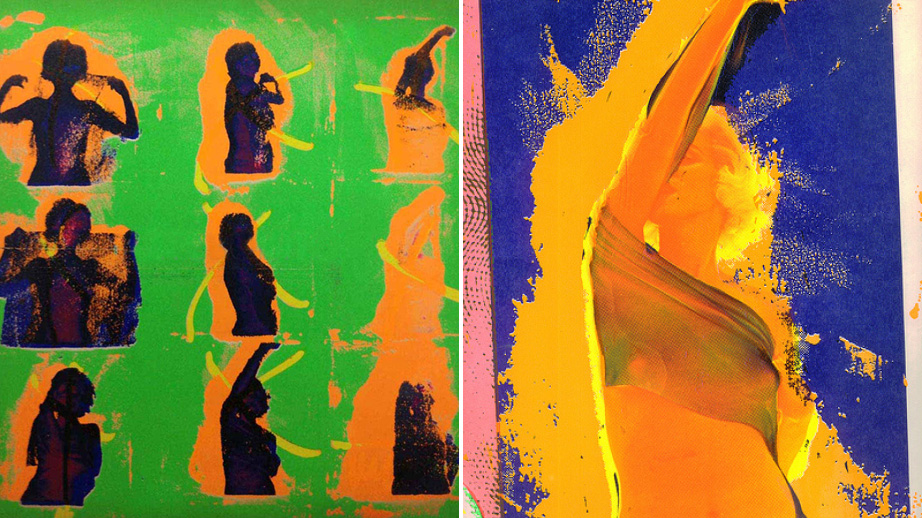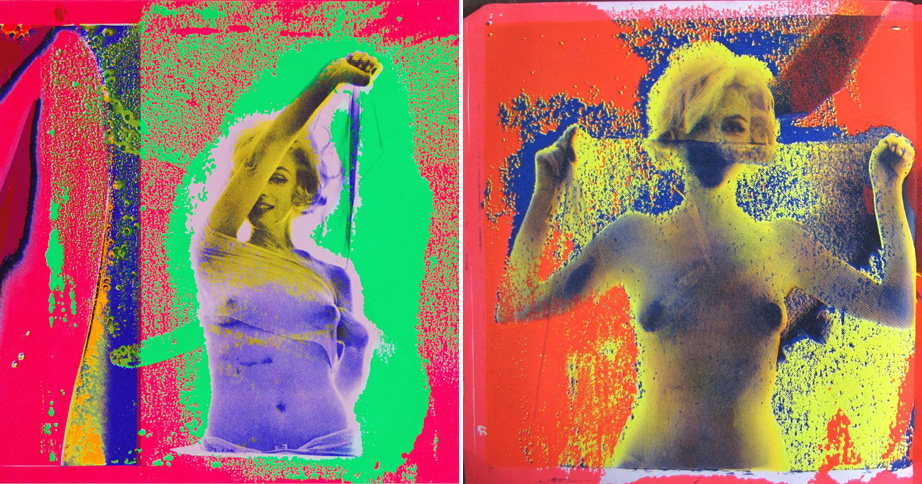On June 21, 1962, photographer Bert Stern took what were to be the final photographs of Marilyn Monroe before her death. Know as “The Last Sitting”, the portraits were shot at the Bel Air Hotel in Hollywood over three days. On reflection Stern was never entirely satisfied with them, “because of photography’s technical limitations, they never quite communicated the dazzling image of Marilyn that existed in my mind’s eye at the time I photographed her.” As a result, over the next five years Stern began experimenting with silkscreening techniques in order to capture and preserve the image of Marilyn he saw at the time he photographed her.
For Stern, making silkscreens of his own photographs of Marilyn Monroe gave him complete control of every drop of pigment to touch paper, since each tone is laid down by hand. From that control comes his feeling that the silkscreen technique brings a photograph as close as it can come to being an original art object. Beyond that, though, Stern notes, “it adds dimension to the photograph that film can’t capture. The layers of paint let me rebuild the mood of my shooting with Marilyn, the intangible impressions she made on me when we worked, most of which simply elude the fundamental tools of photography.”
THE TECHNIQUE:
Although the creation of silkscreened images is not in itself a strictly photographic process, Stern sees in it a way to add dimension to ordinary photographs – black and white or color. He uses standard materials and methods for photo silk-screening. A conventional negative is first enlarged onto an 8×10” sheer of “litho” film. The resulting high-contrast positive transparency is then placed in contact with a sheet of special “photo screen film” and exposed to the light from a 500-watt photoflood lamp until the image has been printed onto the screen film. After processing, the screen film image is transferred to a mesh screen, through which pigments are then applied onto the actual surface of the final prints. There pigments can consist of a variety of different paints or inks, including the luminescent Day-Glo material Stern uses. Once a single application has dried, extra layers can be added. For these images of Marilyn Monroe, Stern placed the extra layers slightly out of register with the initial screening. He often applies pigments by simply painting them freehand over the screened images.
Published in Issue #2 of Avant Garde magazine, March 1968. The Marilyn Monroe Trip: A Portfolio of Serigraphic Prints by Bert Stern.
